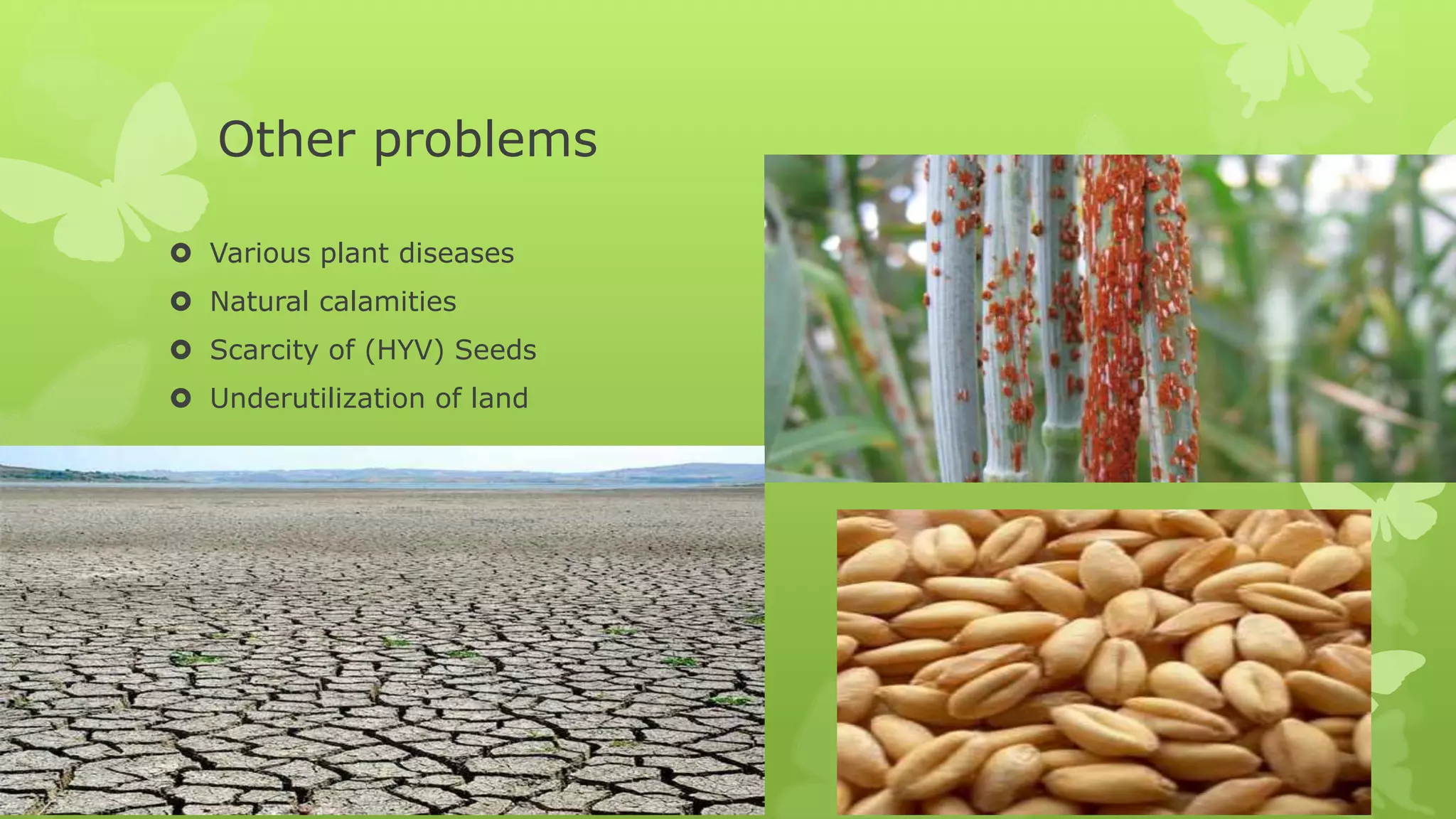The document discusses ways to improve Pakistan's agriculture sector and make it an engine of economic growth. It outlines several problems currently facing the sector, including limited cultivated land, low yields, lack of infrastructure and facilities, small farm sizes, outdated farming methods, insufficient research, and poor conditions for farmers. It then proposes solutions like using fertilizers and pesticides properly, establishing agro-based industries, increasing agricultural research, providing high-yielding seed varieties, setting reasonable crop prices, expanding mechanization, offering tax concessions for farm technology, and constructing dams and barrages for irrigation and flood control. The conclusion emphasizes that modernizing techniques, credit, infrastructure, and research are needed to address agriculture's problems and strengthen Pakistan's agrarian



























































